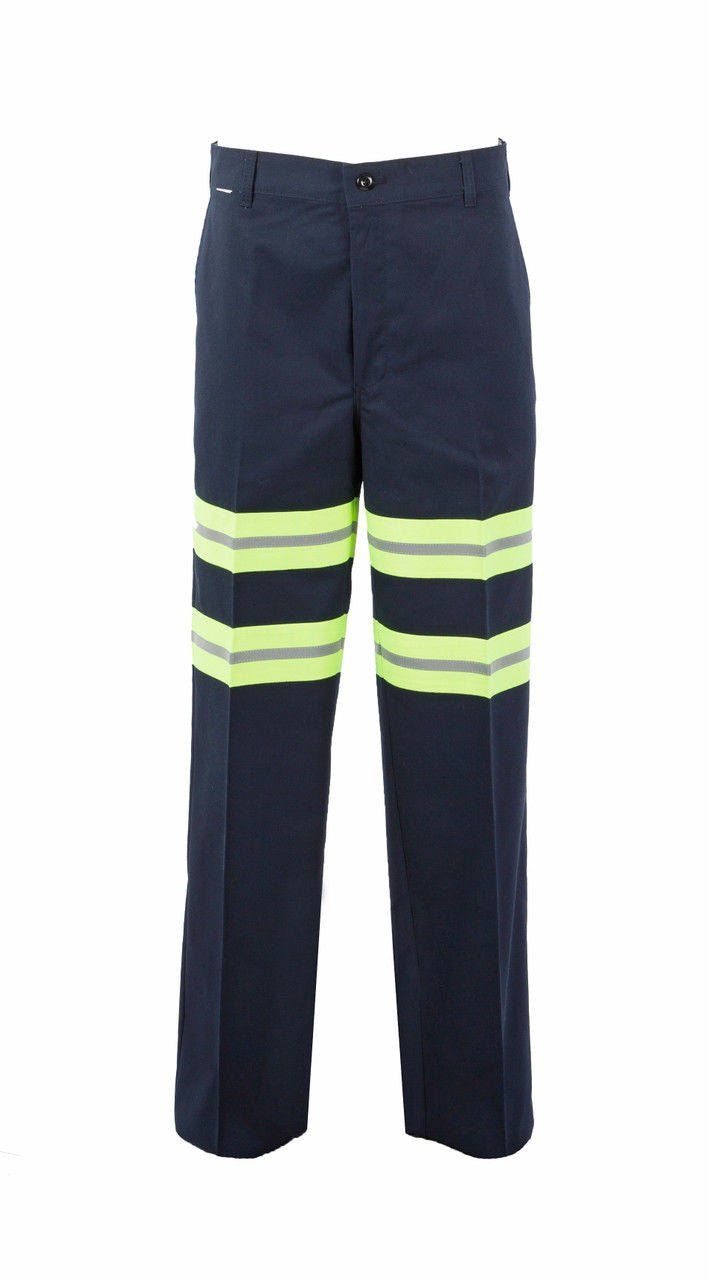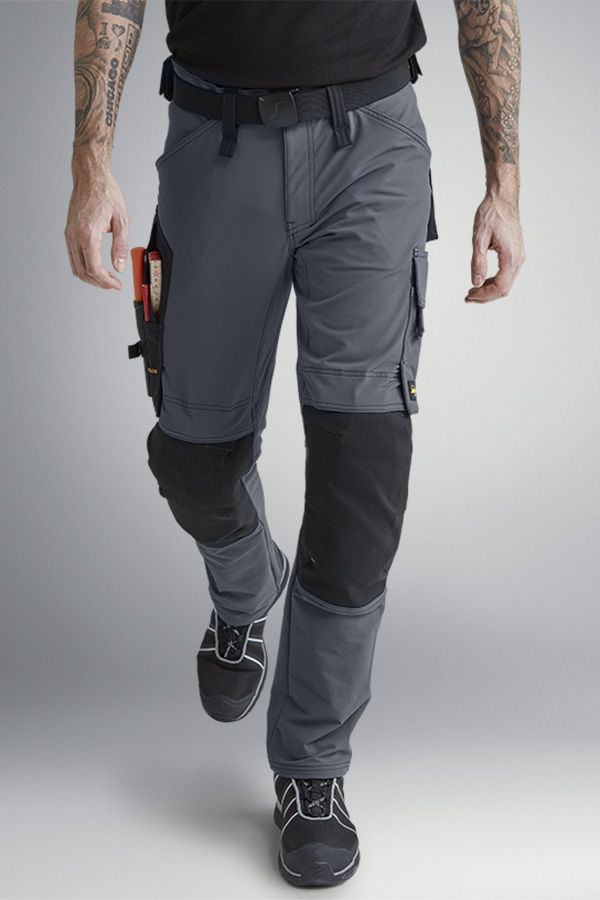
Advanced Sustainable Industrial Workwear: 2025 Circular Economy Innovations
As Saudi industrial sectors align with Vision 2030 sustainability mandates in 2025, the evolution of industrial workwear has accelerated dramatically, transforming from a simple environmental consideration to a comprehensive circular economy approach. Today's advanced sustainable workwear solutions integrate regenerative design principles, zero-waste manufacturing, and enhanced performance characteristics that exceed traditional options while minimizing environmental impact across the entire product lifecycle.
The Business Case for Circular Industrial Workwear
Beyond environmental responsibility, sustainable workwear delivers significant operational advantages:
Sustainable Workwear Performance Metrics
- 43%Average reduction in carbon footprint compared to traditional workwear systems
- 26%Increase in garment lifespan through advanced circular design principles
- SAR 18.7MAnnual savings for major Saudi industrial firm through integrated sustainability program
- 84%Waste reduction through closed-loop manufacturing and end-of-life reclamation
Key drivers accelerating sustainable workwear adoption include:
- Regulatory compliance optimization: Alignment with Saudi Green Initiative requirements and international standards
- Supply chain resilience: Reduced vulnerability to raw material price volatility through recycled content integration
- Employee engagement enhancement: Increased workforce satisfaction and retention through environmental stewardship
- Corporate responsibility alignment: Support for documented ESG commitments required by investors and partners
- Total cost optimization: Long-term savings through extended product lifecycles and waste reduction
Next-Generation Sustainable Materials
Material science breakthroughs have revolutionized sustainable industrial workwear:
Bio-Based Performance Fibers
Plant-derived alternatives delivering superior functionality:
- Algae-based technical fabrics: Carbon-negative materials cultivated in desert vertical farming operations
- Agricultural waste composites: Date palm and wheat straw byproducts transformed into durable technical textiles
- Engineered microbial polymers: Lab-developed proteins mimicking performance characteristics of petroleum-based synthetics
- Saudi-specific biomass utilization: Regional plant species adapted for fiber production in arid environments
- Multi-functional biopolymer blends: Customized combinations optimizing specific performance requirements
Advanced Recycled Components
Sophisticated reclamation technologies creating circular material flows:
- Industrial waste upcycling: Transformation of manufacturing byproducts into performance textiles
- Chemical recycling integration: Molecular-level reclamation of previously unrecyclable blended fabrics
- Cross-industry material exchange: Coordinated programs recovering materials across different sectors
- Post-consumer textile recovery: Collection systems converting end-of-life workwear into new products
- Ocean plastic remediation: Marine waste conversion into high-performance components
Case Study: SABIC's Circular Workwear Initiative

In late 2024, Saudi petrochemical leader SABIC implemented a comprehensive circular workwear program featuring garments with 85% recycled or bio-based content. The initiative included a closed-loop collection system, with worn uniforms processed at specialized facilities to extract and purify fiber components for remanufacturing.
The program utilized chemical recycling technology to process blended materials previously considered unrecyclable, including flame-resistant fabrics. Performance testing demonstrated the recycled-content workwear matched or exceeded traditional alternatives in durability and protection metrics. The initiative reduced carbon emissions by 41% compared to previous uniform systems while generating a 22% cost savings over the garment lifecycle. Employee surveys showed 87% reported increased pride in company environmental leadership.
Circular Design Architectures
Holistic approaches ensuring sustainability throughout the product lifecycle:
Zero-Waste Pattern Engineering
Design methodologies eliminating manufacturing waste:
- Computer-optimized pattern layouts: AI algorithms minimizing fabric waste during cutting
- Geometric efficiency modeling: Design elements engineered to utilize standard material dimensions
- Scrap integration systems: Production processes incorporating cutting waste into reinforcement components
- Modular construction techniques: Segmented designs enabling efficient material utilization
- 3D knitting implementation: Seamless fabrication eliminating cutting waste entirely
Disassembly-Optimized Construction
Engineering approaches facilitating end-of-life material recovery:
- Mono-material architecture: Single-polymer designs eliminating separation requirements
- Component isolation systems: Construction methods allowing easy separation of different materials
- Minimal attachment points: Strategic connection reduction simplifying disassembly
- Non-destructive fastening: Mechanical connections replacing permanent bonding techniques
- Material identification integration: Embedded information facilitating proper recycling processing
Extended Lifespan Engineering
Design approaches maximizing service duration:
- Reinforced stress point construction: Targeted durability enhancement in high-wear areas
- Modular replacement systems: Component-specific renewal options avoiding complete garment disposal
- Self-repair material integration: Fabrics designed to heal minor damage through activation technology
- Adaptable sizing architecture: Adjustment features accommodating changing wearer dimensions
- Multi-configuration versatility: Transformable designs serving multiple functional requirements
Industry-Specific Sustainable Solutions
Tailored approaches addressing varied Saudi industrial environments:
Petrochemical Sector Applications
Sustainable solutions for demanding oil and gas environments:
- Renewable FR technology: Bio-based flame-resistant treatments replacing controversial chemicals
- Heat-reflective bio-coatings: Plant-derived finishes reducing thermal stress in extreme temperatures
- Chemical-resistant natural materials: Specialized treatments enabling sustainable fibers in harsh conditions
- Water-minimal cleaning systems: Technologies maintaining FR properties with minimal resource consumption
- End-of-life detoxification: Processes neutralizing contaminants prior to recycling operations
Manufacturing Sector Innovation
Solutions optimized for production environments:
- Static-dissipative natural fibers: Plant-based alternatives to synthetic anti-static materials
- Biodegradable ESD components: Compostable materials maintaining critical electrical properties
- Contaminant-repellent bio-finishes: Natural treatments reducing chemical accumulation in garments
- Modular protection zones: Targeted high-performance areas minimizing total synthetic content
- Cross-functional design optimization: Versatile garments reducing total uniform requirements
Construction Applications
Sustainable solutions for building sector requirements:
- Impact-resistant natural composites: Plant-fiber reinforcement in high-abrasion zones
- Cooling-optimized sustainable textiles: Bio-based fabrics enhancing thermoregulation in outdoor environments
- Lightweight protection systems: Reduced material mass designs maintaining safety standards
- Sand-resistant eco-finishes: Natural treatments minimizing desert environment degradation
- UV-protective bio-stabilizers: Plant-derived compounds preventing solar radiation damage
Implementation Strategies for Saudi Industries
Effective approaches for transitioning to sustainable workwear programs:
Phased Transition Methodology
Strategic implementation approaches minimizing operational disruption:
- Priority application identification: Analysis determining optimal starting points for sustainability integration
- Progressive performance criteria: Incremental specifications allowing technology maturation
- Pilot program implementation: Controlled deployment validating effectiveness before full-scale adoption
- Cross-team coordination: Collaborative approaches involving procurement, operations, and sustainability functions
- Data-driven refinement: Continuous improvement through systematic performance monitoring
Total Cost Optimization
Financial frameworks supporting sustainable program viability:
- Lifecycle analysis implementation: Comprehensive cost assessment beyond initial purchase price
- Extended performance verification: Testing protocols confirming durability claims and service life
- Waste reduction quantification: Systems measuring and valuing decreased disposal requirements
- Carbon credit integration: Mechanisms capturing value of emissions reductions
- Multiple benefit valuation: Frameworks accounting for non-financial program advantages
Future Directions in Sustainable Industrial Workwear
Emerging technologies promise further sustainability advancement:
- Desert-adapted fiber cultivation: Saudi-specific plants engineered for industrial textile production
- Programmable material platforms: Garments capable of adapting properties based on environmental conditions
- Artificial photosynthesis integration: Carbon-capturing functions embedded in workwear textiles
- End-of-life molecular disassembly: Advanced recycling triggering complete material breakdown on demand
- Integrated lifecycle tracking: Digital systems monitoring environmental impact throughout service life
- Water harvesting functionality: Textiles capturing atmospheric moisture in arid industrial environments
Conclusion: Strategic Advantage Through Sustainable Workwear
For Saudi industrial organizations navigating Vision 2030 sustainability requirements, advanced circular workwear systems represent significant opportunities for operational enhancement while demonstrating environmental leadership. By implementing comprehensive approaches that address the entire product lifecycle from material selection to end-of-life reclamation, companies can achieve meaningful advantages in efficiency, compliance, and market positioning.
The most successful programs recognize that sustainable workwear implementation extends beyond simple material substitution to encompass holistic system redesign. Those organizations developing sophisticated, science-based approaches aligned with specific operational requirements will realize substantial benefits in both environmental and financial performance metrics.
About the Author
Dr. Ibrahim Al-Rashidi is a sustainable industrial textile specialist with expertise in circular economy systems for demanding operational environments. With a Ph.D. in Advanced Materials Science and extensive consulting experience with major Saudi industrial organizations, he specializes in developing workwear programs that balance environmental responsibility with performance requirements. Dr. Al-Rashidi has published numerous research papers on regenerative textile systems and regularly advises on large-scale sustainability initiatives throughout the GCC region.


Circular Economy Specialist
Expert in sustainable textiles and industrial workwear innovations
Share Article
Related Articles
Sustainability Assessment
Evaluate your current workwear program and discover opportunities to enhance sustainability while improving performance and reducing lifecycle costs.
Request Assessment